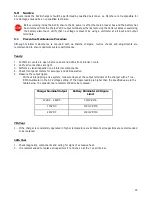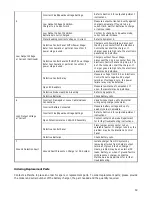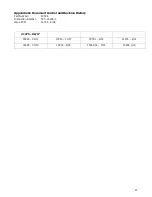
15
4.0
Frequently Asked Questions
Q
: How can I tell what options are included on my A12B charger?
A
: Every charger will have a dedicated manual cover sheet included with the charger manual, which lists all the
options included. If the manual that is shipped with the charger is no longer available, call La Marche and provide
the five digit accessory code at the end of the model number.
Q
: Can two A12B chargers be connected in parallel?
A
: Yes, two or more A12B chargers can be connected in parallel as long as they are of the same output voltage
rating. Chargers in parallel are not designed to load share, unless the load sharing option (10G) is included. Refer
to specific option manual for more information. Paralleling is to not be confused with load sharing.
Q
: What is the use of the potentiometers on the electronic control panel?
A
: The control panel has two potentiometers, labeled P1 CURRENT and P2 HI-VOLT. The P1 potentiometer is
used to adjust the electronic current limit and the P2 potentiometer is used to adjust the high voltage clamp. It
is not recommended to adjust the potentiometers; the potentiometers are factory tested and preset so that no
field adjustments are necessary.
Q
: Can the A12B charger settings be changed to accommodate charging Nickel Cadmium batteries
instead of the intended Lead Acid battery, or vice versa?
A
: The necessary adjustments can be made, but are dependent on model and number of cells that will be used.
The change that will be necessary for every model type is the output voltage adjustment; call La Marche to verify
that the charger in question will have the necessary output range. If alarm accessories are installed, alarm
thresholds will also need to be changed to the desired battery type defaults, refer to appropriate option manual
for procedure and default values.
Q
: If equipped with alarm contacts, can the alarm contact reference on the charger schematic be
used for determining connections?
A
: Not completely. The charger schematic, for a charger with the option included, will show an alarm relay board
with contact indication. However, all the contacts are shown in resting state, which is not true when the charger
is energized. The charger schematic should also include an alarm contact table that specifies which relays are
energized during normal operation, and which are not. Refer to the appropriate option manuals for more
information.
Q:
Why is there a Low Current alarm and can it be disabled?
A
: A Low Current alarm can be triggered by various conditions, but not all are considered to be severe. A common
condition encountered is the batteries reaching nominal voltage and being fully charged with no constant load
present. At this point, the charger is providing trickle charge to the batteries with minimal current draw and
indicating a known low current condition. If this is the case, refer to the option manual for disabling instructions.
More severe conditions include charger failure, loss of AC power, maladjustment of output voltage, and possible
disconnection of DC loads. If this is the case, other alarms will also be present.













































